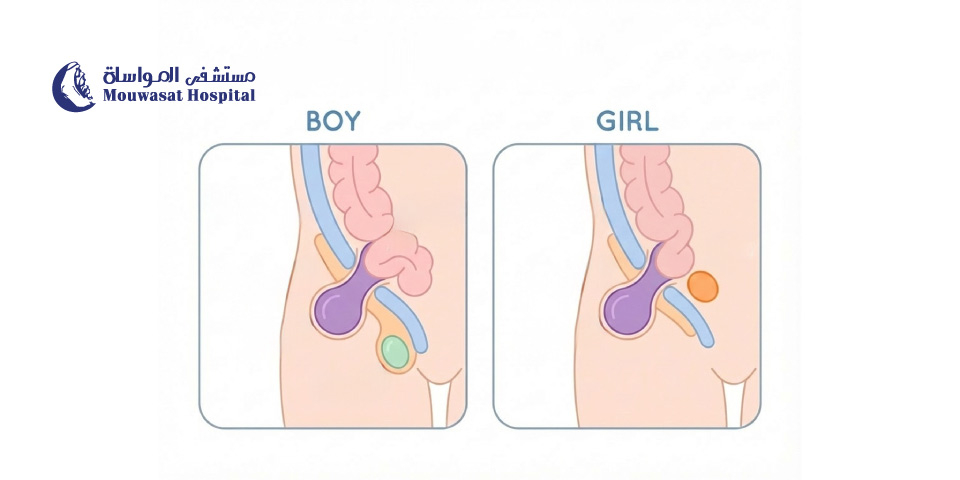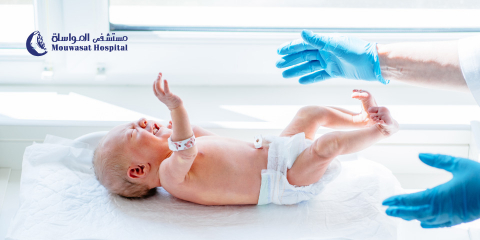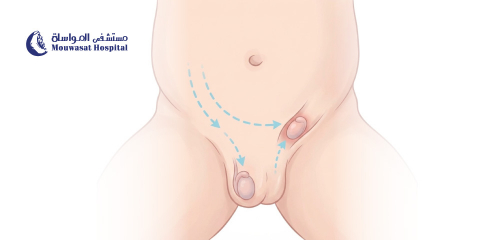
Inguinal Hernia in Children: Causes, Symptoms, and Treatment
Have you noticed a soft bulge or lump in your child’s lower abdomen or groin area that becomes more visible when they cry and disappears when they are lying down or calm? This is often a sign of inguinal hernia in children.
Inguinal hernia is a common condition that can affect infants and children. If not treated promptly, it may lead to serious complications such as intestinal obstruction or loss of blood supply to tissues.
In this article, we’ll cover in detail the causes of inguinal hernia in children, symptoms to watch for, available treatment options, and when surgery becomes necessary to ensure your child’s safety.
We’ll also answer the most common questions parents ask, such as:
- When is inguinal hernia dangerous in children?
- How do I know if my child has an inguinal hernia?
- Does inguinal hernia go away on its own?
- Is inguinal hernia surgery safe for children?
Causes of Inguinal Hernia in Children
The story of inguinal hernia begins during fetal development. In male babies, the testicles first develop inside the abdomen and then gradually move through a small passage called the inguinal canal into the scrotum. This canal also exists in females.
- Inguinal hernia occurs when this canal does not close completely after birth, leaving an opening that allows intestines or other abdominal tissues to slip into the groin area.
- Crying or straining does not cause inguinal hernia, contrary to popular belief.
However, any bulge or signs of pain should never be ignored. Seek medical attention immediately or visit the emergency room.
If left untreated, inguinal hernia can lead to serious complications such as bowel incarceration or strangulation, which is why surgery is the best solution to protect your child’s health.
How to Recognize Inguinal Hernia in Children? Key Signs
Inguinal hernia can occur at any age but is most common in newborns. It may not be noticeable for several weeks or months after birth.
Typical signs include:
- A soft bulge in the groin area, scrotum in boys, or labia in girls.
- The bulge often appears and disappears, becoming more visible when the child cries or strains and reduces when they are calm or asleep.
Diagnosis of Inguinal Hernia in Children
Most cases are diagnosed through a physical examination, where the doctor observes the bulge that appears during crying or straining and disappears when relaxed.
If the bulge is persistent or the doctor suspects a mass rather than a hernia, an ultrasound may be recommended. However, imaging is not always necessary.
When Is Inguinal Hernia Dangerous in Children?
If the bulge remains even when the child is relaxed, it may indicate that part of the intestine or abdominal organs is trapped inside the hernia.
This is called an incarcerated hernia and requires urgent medical attention.
Symptoms include:
- Severe pain
- Vomiting
- Firm or red swelling in the groin
If blood supply to the trapped tissue is cut off, the condition becomes more critical, known as strangulated hernia.
Symptoms include:
- Persistent severe pain
- Vomiting and loss of appetite
- Redness or bluish discoloration of the bulge
- Fever or blood in stool
This is a medical emergency requiring immediate surgery.
Treatment of Inguinal Hernia in Children
Surgery is the only effective treatment for inguinal hernia in children.
The procedure usually takes less than an hour and is considered a day of surgery, meaning your child can go home the same day unless they are premature or have other health conditions.
Types of Hernia Repair Surgery
- Open Surgery: A small incision in the groin to repair the hernia.
- Laparoscopic Surgery: Several tiny incisions in the abdomen to insert a scope and surgical instruments.
How Is Inguinal Hernia in Children Surgery Performed?
- The child receives general anesthesia for complete comfort and pain control.
- The surgeon makes a small incision in the groin.
- The hernia contents are pushed back into the abdomen, and the opening in the inguinal canal is closed.
- The incision is closed with fine stitches or medical tape.
- Most children go home a few hours after surgery. A follow-up appointment is scheduled 7–10 days later to check for healing.
Home Care After Inguinal Hernia Surgery
- Diet: Most children can resume a normal diet immediately after surgery.
- Activity: Return to non-strenuous activities within 1–2 weeks or when pain-free. Avoid jumping or heavy lifting.
- Bathing: No bathing for 2–3 days post-surgery to keep the incision clean and dry.
- Follow-up: Attend the scheduled check-up to ensure proper healing.
Why Choose Al Mouwasat Hospital for Inguinal Hernia Surgery?
Our Pediatric Surgery Department offers comprehensive care for infants, children, and adolescents, from consultation to surgery and post-operative follow-up.
Key Advantages:
- Expert Team: Board certified pediatric surgeons.
- Child-Friendly Environment: Emotional and developmental support programs.
- Safe Anesthesia Protocols: Tailored for children.
- Minimally Invasive Techniques: Faster recovery and less pain.
- Post-Surgical Care: Pain management and monitoring in pediatric intensive care units.
- Parent Education: Guidance throughout the treatment journey.
- Nutritional Support: For optimal recovery.
Medical Disclaimer
This article is for educational purposes only and is not a substitute for professional medical advice. Always consult a pediatrician for diagnosis and treatment.
FAQs About Inguinal Hernia in Children
Do girls get inguinal hernias?
Yes. Although more common in boys, girls can also develop inguinal hernias, sometimes involving an ovary.
When is inguinal hernia dangerous?
When intestines or organs become trapped (incarcerated) or blood supply is cut off (strangulated), requiring emergency surgery.
How do I know if my child has an inguinal hernia?
Look for a bulge in the groin or scrotum that appears when crying and disappears when relaxed. Persistent bulges or pain require immediate medical attention.
Does inguinal hernia go away on its own?
No. Surgery is necessary to repair the hernia and prevent complications.
Is inguinal hernia surgery safe for children?
Yes. It is a quick, safe procedure performed by specialists, usually as same-day surgery.
Read more:
Umbilical Hernia in Children: Causes, Symptoms, and Treatment
Undescended Testicle in Children: Causes, Symptoms, and Treatment




